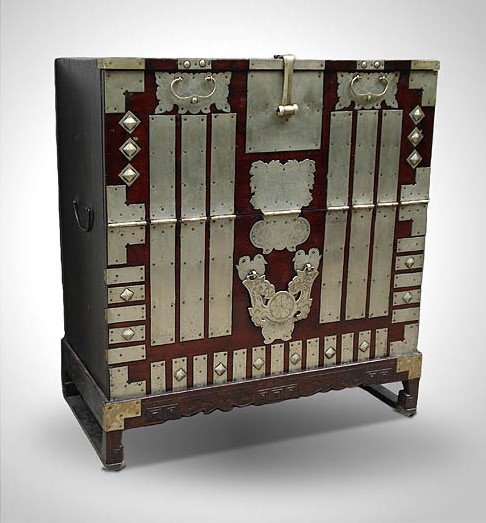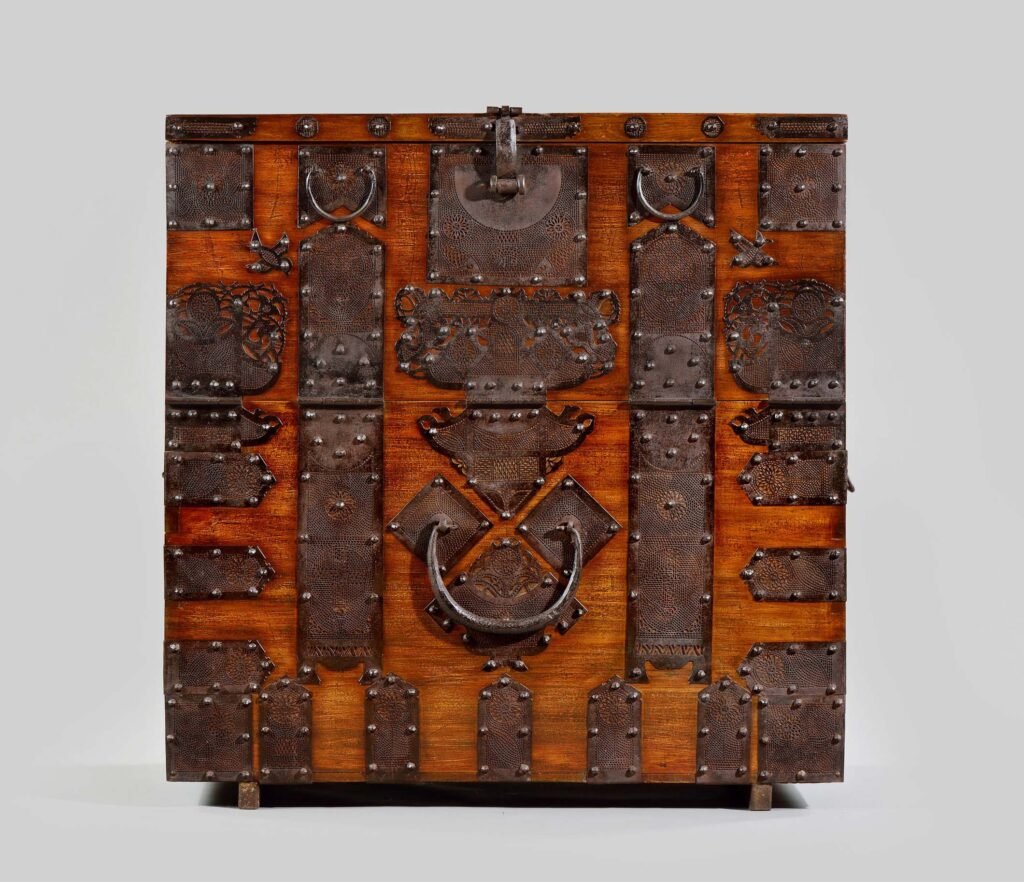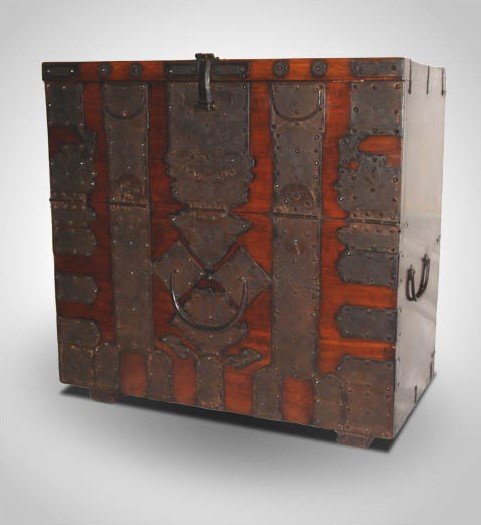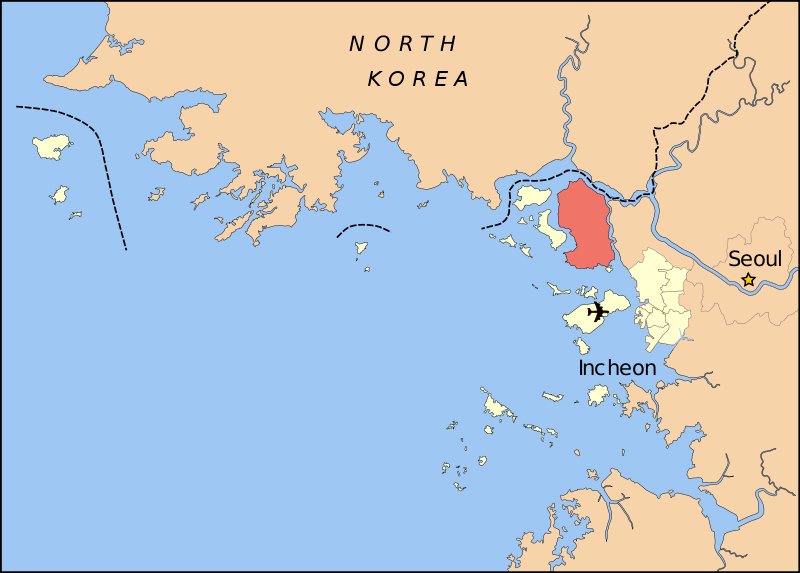ANALYSIS OF HINGES.
QUESTION? The bandaji is large and mostly covered with white brass hinges?


ANSWER: Pyongyang area southern part of Pyongan Do province.
LINK: PYONGYANG BANDAJI-평양 반닫이
Originally from Pyongyang area in the northern part of the peninsula, where forest species were more limited due to climatic conditions and, given the poor grain (often basswood or linden) of the wood used to make this furniture. Therefore a particular attention was paid to decoration, with extensive use of metal parts adorning the front of the cabinet.
Special features: More than 90% of the front chest is covered with metal, usually white brass. Long rectangular plates are used as door fittings.
SIMILAR PIECES.

Linden wood, white brass fittings. The metal work on this piece is finely decorated with incised auspicious motif.
Pyongyang area, Pyongan Do province.
Late 19th Century.
H. 88cm, W. 90cm, D. 45cm.

Stained linden wood, White brass fittings. Pyongyang style.
Early 20th century. H. 97cm, W. 89cm, D. 45cm.
QUESTION? The bandaji is large and mostly covered with cast iron hinges?


ANSWER No 1: If the metal plates are thin, pierced, and covering the chest largely, the chest is called a “Sung Sun I” Bandaji from Pakchon area in Pyongan Do province. (Northern west part of the province).
LINK: FURNITURE FROM THE NORTHERN PROVINCES.
For the same reasons as the previous piece, the massive use of metal parts compensated for the poor grain of the woods available in this northern province.
SIMILAR PIECES.

Collection: “ANTIKASIA“

Auktionhaus Arnold, Frankfurt, Germany. June 8, 2024.

ANSWER No 2: If the metal plates are thicker, pierced, and covering the chest to a lesser extend, the chest is probably coming from Ganghwa island.
LINK: GYEONGGI DO BANDAJI – 경기도 반닫이
The use of noble wood species such as elm or zelkova explains the more moderate use of metal parts adorning the front of the furniture.

SIMILAR PIECES.


H. 65cm, W. 80,5cm, D. 42,1cm. Collection: National Museum of Korea.
FITTINGS DIFFERENCES BETWEEN THE “SUNG SUN I” AND THE “GANGWHA” STYLES.
“Sung SUN I” from Pyongan Do.

The “Sung Sun I” style bandaji from Pyongan Province is virtually covered in metal parts. These hinges are mostly quite thin and very finely pierced. Besides geometric patterns, motifs such as the butterfly and the southern gate pattern are predominant.

Ganghwa from Gyeonggi Do.

The hinges are fewer in number and relatively thick. The character 卍 or 亞 are often engraved on the hinges

QUESTION? Bandaji covered with yellow brass hinges?


ANSWER: Large Bandaji covered with yellow brass hinges were mainly native to Gyeonggi-do province, where the capital, Seoul, is located today. A veritable center of power, where the wealthy class of Korean society was concentrated at the time, these relatively expensive pieces of furniture were destined for them. If original, they are rare pieces.
LINK: GYEONGGI DO BANDAJI – 경기도 반닫이
Special features: Gourd bottle pattern on the front opening panel fittings.
SIMILAR PIECES.


Collection: National Folk Museum of Korea.
ANALYSIS OF SHAPES.
QUESTION? Bandaji with a light color and large wrought iron fittings?


ANSWER: This bandaji is specific of Gangwon Do province situated in the eastern par of the peninsula.
LINK: GANGWON DO BANDAJI – 강원도 반닫이
Special features: The top, sides, and bottom panels extend all the way to the front, creating a distinctive frame around the front of the bandaji. This characteristic is a common feature on chests from Gangwon Province and is not found on bandaji from other provinces. The wood used was primarily pine and was not always stained to a darker color.
The central hinges, which connect the front opening panel to the bottom panel, consist of two large swallowtail-design plates and one central gourd-shaped plate.
SIMILAR PIECES.

Pine wood, iron fittings.
H. 80cm, W. 95cm, D. 42cm. Private collection.

H. 83cm, W. 93,3cm, D. 41,5cm.
Private collection

